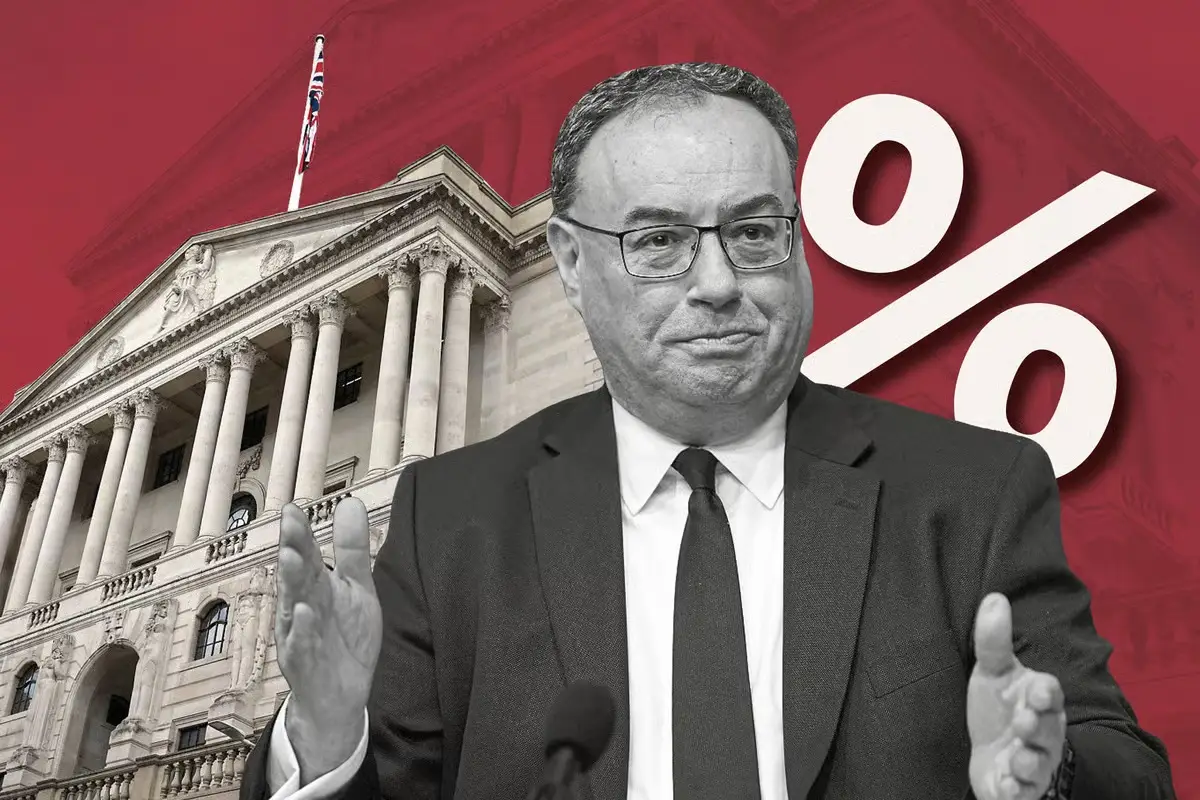Turkey’s medium-term economic programme forecasts inflation to hit 28.5% in 2025 and 16% in 2026, before reaching single digits from 2027, as the government maintains its commitment to orthodox monetary policy following years of unconventional economic experiments under President Erdogan.
Turkey’s newly published medium-term economic roadmap represents a critical test of the government’s commitment to monetary orthodoxy and its ability to bring down stubbornly high inflation that has plagued the economy for years. The programme, published in the Official Gazette on Sunday, sets ambitious targets for disinflation while acknowledging the challenging path ahead for an economy still grappling with the aftermath of years of unorthodox policies.
One decision can change your entire career. Take that step with our Online courses in ACCA, HESI A2, ATI TEAS 7, HESI EXIT, NCLEX-RN, NCLEX-PN, and Financial Literacy. Join Serrari Ed and start building your brighter future today.
Current Inflation Reality vs. Future Targets
Official data showing Turkey’s annual inflation came in higher than expected in August at nearly 33%, highlighting the significant gap between current reality and the government’s medium-term targets. The current inflation rate of 32.95% in August represents a slight decrease from 33.52% in July 2025, but remains far above the central bank’s year-end target.
This disconnect underscores the magnitude of the challenge facing Turkish policymakers. The government’s forecast of bringing inflation down to 28.5% by the end of 2025 would require a significant deceleration in price growth over the coming months. More ambitious still is the target of reaching single-digit inflation by 2027, which would represent a dramatic transformation for an economy that has experienced persistently high inflation for years.
According to Focus Economics analysis, Turkey’s inflation history has been marked by frequent double-digit figures and periods of hyperinflationary spirals. In the early 1990s, annual inflation rates were routinely above 60%, even surpassing 100% in 1994. The current episode of high inflation, while severe, is not unprecedented in Turkish economic history.
Central Bank’s Orthodox Policy Shift
The foundation of the government’s inflation targets rests on the continued implementation of orthodox monetary policy by the Central Bank of the Republic of Turkey (CBRT). Since abandoning President Erdogan’s unorthodox economic policy that pushed for low interest rates despite high inflation, Turkey’s economic leadership has been working systematically to restore price stability.
The central bank’s current policy rate stands at 43%, following a complex series of adjustments throughout 2025. The bank initiated an easing cycle in December 2024 but was forced to pause and reverse course due to various economic and political pressures. In July 2025, the bank cut its policy rate by 300 basis points, relaunching an easing cycle that had been paused in March.
However, this easing cycle has been complicated by domestic political turmoil. In April 2025, the central bank surprised markets with a 350-basis-point rate hike to 46%, ending the easing cycle due to geopolitical tensions and political instability that triggered a plunge in the lira.
The central bank’s commitment to maintaining tight monetary policy until price stability is achieved has been a cornerstone of the new orthodox approach. As stated in recent policy announcements, “the tight monetary policy stance, which will be maintained until price stability is achieved, will support the disinflation process through moderation in domestic demand, real appreciation in Turkish lira, and improvement in inflation expectations.”
Political Turmoil Threatens Economic Stability
The path to disinflation has been complicated by ongoing political uncertainties that continue to impact financial markets and monetary policy decisions. Markets were jolted when a court ousted the Istanbul provincial head of the main opposition, dealing a fresh judicial blow to Erdogan’s opponents and triggering sharp falls in Turkish share and bond markets.
The political turmoil surrounding the arrest of Istanbul Mayor Ekrem Imamoglu in March 2025 forced the central bank to intervene heavily in currency markets. According to reports, the CBRT sold $12 billion following the arrest, highlighting how political events can quickly undermine monetary policy effectiveness.
These episodes demonstrate the complex relationship between political stability and economic policy implementation in Turkey. The central bank’s ability to maintain credible monetary policy depends not only on technical economic considerations but also on the political environment and market confidence in the government’s commitment to orthodox policies.
Economic Growth and Structural Reform Agenda
The medium-term programme forecasts more modest economic growth compared to previous projections, reflecting the trade-offs inherent in disinflation strategies. The programme projects economic growth at 3.3% in 2025, 3.8% in 2026, and reaching 5% in 2028. These figures represent a more conservative approach compared to the previous medium-term programme from September 2024, which aimed for economic growth at 5% by 2027.
The more modest growth projections acknowledge that tight monetary policy necessary for disinflation typically dampens economic activity in the short term. However, the programme suggests that potential gross domestic product (GDP) growth is expected to increase by 0.5% during the programme period on the back of structural reforms.
Key economic indicators in the programme include ambitious targets for external sector performance. Tourism revenues are anticipated to surge to $75 billion by 2028 from $64 billion this year, while exports are projected to climb to $308.5 billion by 2028 from $273.8 billion currently.
The unemployment outlook remains a concern, with the rate projected at 8.5% in 2025 and 8.4% in 2026. These figures suggest that the labor market will face pressure as monetary tightening constrains economic activity, though the government expects conditions to gradually improve as inflation stabilizes.
Fiscal Policy and External Balance
The programme outlines significant fiscal challenges ahead, with the budget deficit forecast to widen from 2,208.3 billion lira ($53.55 billion) this year to 2,805.1 billion lira in 2028. This trajectory reflects the ongoing costs of economic adjustment and the government’s commitment to supporting the economy during the transition period.
However, the current account outlook shows improvement, with the current account-to-GDP ratio forecast at 1.4% in 2025, before reaching 1% in 2028. The programme sees the current account deficit narrowing to $18.5 billion by 2028, from $22.6 billion this year, suggesting improved external balance as domestic demand moderates and competitiveness improves.
The commitment to maintaining a floating exchange rate regime represents a significant departure from previous periods of heavy intervention. The programme explicitly states that “the floating exchange rate regime will continue and that the role of public finance in supporting macroeconomic stability would be increased during the programme’s term.”
Build the future you deserve. Get started with our top-tier Online courses: ACCA, HESI A2, ATI TEAS 7, HESI EXIT, NCLEX-RN, NCLEX-PN, and Financial Literacy. Let Serrari Ed guide your path to success. Enroll today.
Structural Reforms and Modernization Efforts
Beyond macroeconomic stabilization, the programme outlines an ambitious structural reform agenda designed to enhance Turkey’s long-term economic potential. The reforms range from transitioning into digital or high-value-added technology industries to green transformation initiatives and measures to increase agricultural efficiency.
Six specific reforms have been identified for financial and price stability, including measures to create a strong, institutionalized financial sector, match prices to inflation expectations, increase cost savings, and make capital markets more efficient. These reforms combine administrative changes with legal amendments, suggesting a comprehensive approach to structural transformation.
The emphasis on digital transformation and high-value-added industries reflects Turkey’s recognition that sustainable economic growth requires moving up the value chain. This strategic direction aligns with global trends toward digitalization and may help Turkey reduce its dependence on imports while boosting export competitiveness.
Currency Dynamics and Market Confidence
The Turkish lira’s performance remains a critical indicator of market confidence in the government’s economic programme. The lira stood at 41.2650 against the dollar at the time of the programme’s release, representing continued weakness despite orthodox policy implementation.
The lira has depreciated by over 400% compared to the US dollar and euro since 2008, largely due to the period of unorthodox economic policies. Despite recent stabilization efforts, the currency remains under pressure, with the USD/TRY exchange rate down 21.02% over the last 12 months.
Market analysts remain divided on the lira’s prospects. Various financial institutions provide differing forecasts, with some expecting further weakening while others see potential for recovery as orthodox policies take hold. The currency’s performance will be crucial for achieving inflation targets, as Turkey’s heavy reliance on imports means that exchange rate stability is essential for price stability.
International Context and Investor Confidence
Turkey’s economic adjustment is taking place against a backdrop of global monetary tightening and geopolitical uncertainties. The success of the country’s disinflation programme will depend partly on international developments, including global inflation trends, commodity prices, and capital flow patterns.
The return to orthodox policies has begun to restore some international investor confidence, but significant challenges remain. President Erdogan’s historical opposition to high interest rates, based on both ideological and economic considerations, creates ongoing uncertainty about the sustainability of current policies.
However, recent analysis suggests that Erdogan cannot return to unorthodox policies after achieving a reasonable level of economic stability. The political costs of policy reversal, combined with the economic benefits of orthodoxy, may help lock in the current approach.
Challenges and Risk Factors
Several significant risk factors could derail Turkey’s disinflation programme. Political instability continues to pose the most immediate threat, as demonstrated by the market turmoil following recent judicial actions against opposition figures. The ability to maintain policy consistency despite political pressures will be crucial for programme success.
External factors also present risks. Global economic conditions, particularly in Turkey’s major trading partners, could affect export performance and capital flows. Rising protectionism in global trade, as mentioned in central bank communications, poses additional challenges for an economy dependent on international integration.
Domestic factors include the persistence of inflation expectations and pricing behaviors that could resist policy efforts. The programme acknowledges that “inflation expectations and pricing behaviour tend to improve, they continue to pose risks to the disinflation process.”
Historical Context and Lessons Learned
Turkey’s current economic challenges must be understood in the context of its recent economic history. The period from 2018 to 2023 was marked by unorthodox monetary policies that prioritized growth over price stability, leading to currency crises and persistent high inflation.
The shift back to orthodox policies began after the May 2023 elections, with the appointment of new economic leadership signaling a fundamental change in approach. This policy reversal has already shown some positive results, including improved central bank reserves and renewed international investor interest.
The current programme builds on lessons learned from this period, emphasizing the importance of credible monetary policy, fiscal discipline, and structural reforms. The ambitious nature of the inflation targets reflects both the urgency of the situation and confidence in the orthodox policy framework.
Implementation Challenges and Success Factors
The success of Turkey’s medium-term programme will depend on several critical factors. First, maintaining political support for potentially painful adjustment measures will be essential. The social costs of disinflation, including slower growth and higher unemployment in the short term, could test public and political resolve.
Second, the central bank’s independence and credibility must be preserved. Markets will closely monitor policy decisions for signs of political interference or deviation from orthodox principles. The bank’s communication strategy and consistency of action will be crucial for maintaining credibility.
Third, structural reforms must be implemented effectively to support long-term competitiveness and growth potential. The success of reforms in areas such as digitalization and green transition could help offset some of the short-term costs of disinflation.
Regional and Global Implications
Turkey’s economic adjustment has broader implications for the region and global economy. As a major emerging market and NATO member, Turkey’s economic stability affects regional security and global financial markets. Success in achieving price stability could serve as a model for other countries facing similar challenges.
The programme’s emphasis on maintaining the floating exchange rate regime and avoiding heavy currency intervention represents a departure from past practices and aligns with international best practices. This approach could help restore Turkey’s standing in international financial markets and improve access to global capital.
Outlook and Conclusion
Turkey’s medium-term economic programme represents an ambitious but necessary roadmap for achieving price stability and sustainable growth. The targets for inflation reduction are challenging but achievable if orthodox policies are maintained consistently and structural reforms are implemented effectively.
The programme’s success will depend on multiple factors, including political stability, international economic conditions, and the government’s ability to maintain public support for potentially difficult adjustment measures. While significant challenges remain, the commitment to orthodox economic policies provides a solid foundation for achieving the programme’s objectives.
The journey from current inflation levels near 33% to single-digit rates by 2027 will require sustained effort and policy discipline. However, the alternative—a return to unorthodox policies and persistent high inflation—would likely prove far more costly for Turkey’s economy and society in the long run.
As Turkey embarks on this challenging but essential path toward price stability, the success or failure of this programme will have lasting implications not only for the Turkish economy but also for broader debates about economic policy effectiveness in emerging markets facing similar challenges.
Ready to take your career to the next level? Join our Online courses: ACCA, HESI A2, ATI TEAS 7 , HESI EXIT , NCLEX – RN and NCLEX – PN, Financial Literacy!🌟 Dive into a world of opportunities and empower yourself for success. Explore more at Serrari Ed and start your exciting journey today! ✨
Track GDP, Inflation and Central Bank rates for top African markets with Serrari’s comparator tool.
See today’s Treasury bonds and Money market funds movement across financial service providers in Kenya, using Serrari’s comparator tools.
photo source: Google
By: Montel Kamau
Serrari Financial Analyst
8th September, 2025
Article, Financial and News Disclaimer
The Value of a Financial Advisor
While this article offers valuable insights, it is essential to recognize that personal finance can be highly complex and unique to each individual. A financial advisor provides professional expertise and personalized guidance to help you make well-informed decisions tailored to your specific circumstances and goals.
Beyond offering knowledge, a financial advisor serves as a trusted partner to help you stay disciplined, avoid common pitfalls, and remain focused on your long-term objectives. Their perspective and experience can complement your own efforts, enhancing your financial well-being and ensuring a more confident approach to managing your finances.
Disclaimer: This article is for informational purposes only and does not constitute financial advice. Readers are encouraged to consult a licensed financial advisor to obtain guidance specific to their financial situation.
Article and News Disclaimer
The information provided on www.serrarigroup.com is for general informational purposes only. While we strive to keep the information up to date and accurate, we make no representations or warranties of any kind, express or implied, about the completeness, accuracy, reliability, suitability, or availability with respect to the website or the information, products, services, or related graphics contained on the website for any purpose. Any reliance you place on such information is therefore strictly at your own risk.
www.serrarigroup.com is not responsible for any errors or omissions, or for the results obtained from the use of this information. All information on the website is provided on an as-is basis, with no guarantee of completeness, accuracy, timeliness, or of the results obtained from the use of this information, and without warranty of any kind, express or implied, including but not limited to warranties of performance, merchantability, and fitness for a particular purpose.
In no event will www.serrarigroup.com be liable to you or anyone else for any decision made or action taken in reliance on the information provided on the website or for any consequential, special, or similar damages, even if advised of the possibility of such damages.
The articles, news, and information presented on www.serrarigroup.com reflect the opinions of the respective authors and contributors and do not necessarily represent the views of the website or its management. Any views or opinions expressed are solely those of the individual authors and do not represent the website's views or opinions as a whole.
The content on www.serrarigroup.com may include links to external websites, which are provided for convenience and informational purposes only. We have no control over the nature, content, and availability of those sites. The inclusion of any links does not necessarily imply a recommendation or endorsement of the views expressed within them.
Every effort is made to keep the website up and running smoothly. However, www.serrarigroup.com takes no responsibility for, and will not be liable for, the website being temporarily unavailable due to technical issues beyond our control.
Please note that laws, regulations, and information can change rapidly, and we advise you to conduct further research and seek professional advice when necessary.
By using www.serrarigroup.com, you agree to this disclaimer and its terms. If you do not agree with this disclaimer, please do not use the website.
www.serrarigroup.com, reserves the right to update, modify, or remove any part of this disclaimer without prior notice. It is your responsibility to review this disclaimer periodically for changes.
Serrari Group 2025
















